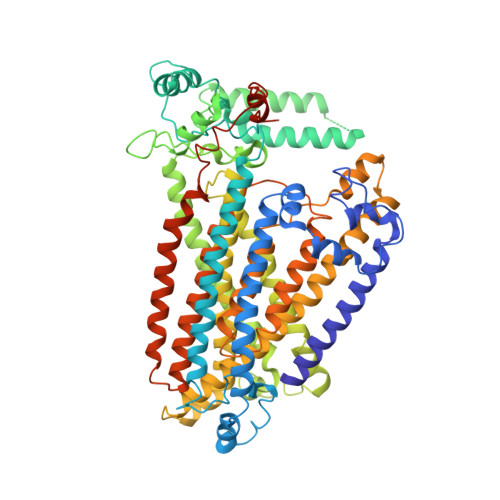A mechanical-coupling mechanism in OSCA/TMEM63 channel mechanosensitivity.
Zhang, M., Shan, Y., Cox, C.D., Pei, D.(2023) Nat Commun 14: 3943-3943
- PubMed: 37402734
- DOI: https://doi.org/10.1038/s41467-023-39688-8
- Primary Citation of Related Structures:
8GRN, 8GRO, 8GRS, 8GSO - PubMed Abstract:
Mechanosensitive (MS) ion channels are a ubiquitous type of molecular force sensor sensing forces from the surrounding bilayer. The profound structural diversity in these channels suggests that the molecular mechanisms of force sensing follow unique structural blueprints. Here we determine the structures of plant and mammalian OSCA/TMEM63 proteins, allowing us to identify essential elements for mechanotransduction and propose roles for putative bound lipids in OSCA/TMEM63 mechanosensation. Briefly, the central cavity created by the dimer interface couples each subunit and modulates dimeric OSCA/TMEM63 channel mechanosensitivity through the modulating lipids while the cytosolic side of the pore is gated by a plug lipid that prevents the ion permeation. Our results suggest that the gating mechanism of OSCA/TMEM63 channels may combine structural aspects of the 'lipid-gated' mechanism of MscS and TRAAK channels and the calcium-induced gating mechanism of the TMEM16 family, which may provide insights into the structural rearrangements of TMEM16/TMC superfamilies.
- Fudan University, Shanghai, 200433, China. zhangmingfeng@westlake.edu.cn.
Organizational Affiliation:
















